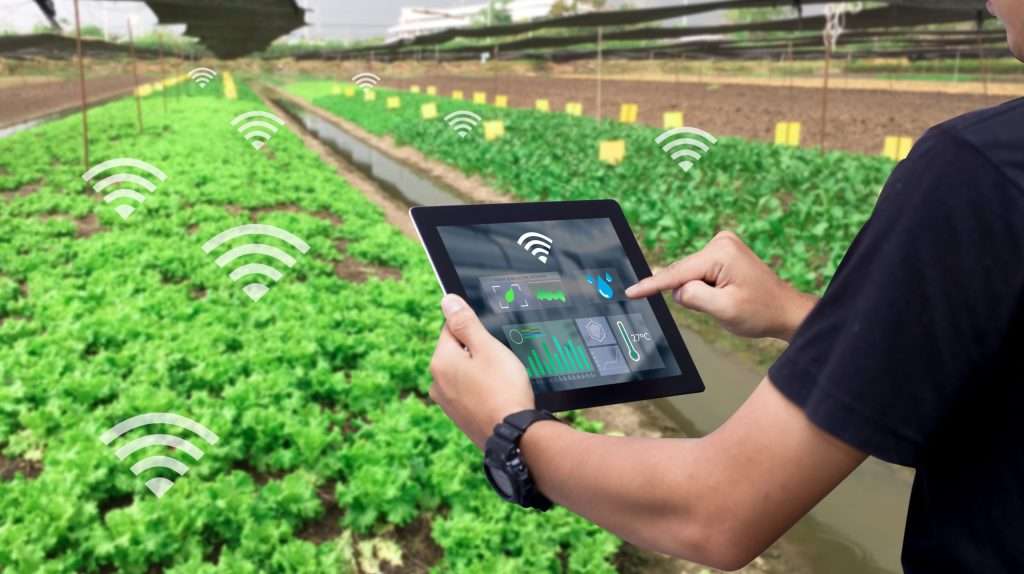Green Growth – The New India 2023

Theme: Green growth is one of the seven top priorities of the Union Budget 2023-24 for ushering green industrial and economic transition, environmentally friendly agriculture and sustainable energy in the country. It will also generate a large number of green jobs. The seven “Saptarishi” priorities-inclusive development, reaching the last mile, infrastructure and investment, potential, youth power, the financial sector, and green growth, are the major themes of the Union Budget, 2023. In the budget speech, the Finance Minister emphasized the words “green” and “sustainable” numerous times. She suggested that during Amrit Kaal, green growth might be revolutionary. The fundamental objective of green growth strategies is to make sure that natural resources can sustainably fulfil their maximum economic potential. What is Green Growth? In essence, ‘Green Growth’ refers to an economic growth plan that places a significant emphasis on sustainable development while minimizing harmful environmental effects. Out of 180 countries, India was placed 169th in the Environment Performance Index of 2022. Rankings were determined by factors like waste management, air quality, biodiversity & habitat, fisheries, ecosystem services, and climate change. India is the fifth-largest economy in the world, although it performed worse than many other smaller economies on the ranking. India’s Initiative to Promote Green Growth: The vision for “LiFE,” or Lifestyle for Environment, set forward by the prime minister aims to inspire a trend towards living sustainably. To lead the world into a green industrial and economic transition, India is vigorously pursuing the “panchamrit” and net-zero carbon emissions by 2070. Additionally, India is putting into practice numerous policies and programmes for the effective use of energy across various economic sectors, including green buildings, green equipment, green farming, green mobility, and green fuels. Large-scale green job opportunities are facilitated by these green growth initiatives, which also contribute to diminishing the economy’s carbon intensity. Green growth policies are an integral part of the structural reforms needed to foster strong, more sustainable, and inclusive growth. They help in several aspects of growth- Enhancing productivity by creating incentives for greater efficiency in the use of natural resources, reducing waste and energy consumption, unlocking opportunities for innovation and value creation, and allocating resources to the highest value use. Boosting investor confidence through greater predictability in how governments deal with major environmental issues. Opening up new markets by stimulating demand for green goods, services, and technologies. Contributing to fiscal consolidation by mobilizing revenues through green taxes and the elimination of environmentally harmful subsidies. These measures can also help to generate or free up resources for anti-poverty programs in such areas as water supply and sanitation, or other pro-poor investments. Reducing risks of negative shocks to growth due to resource bottlenecks, as well as damaging and potentially irreversible environmental impacts. India’s Green Growth Strategy Green growth, from green credits to green energy to green mobility to green farming, was among the seven main priorities that the latest budget announced. Indian green growth and energy transmission are outlined on three pillars: Increasing the production of renewable energy Reducing the use of fossil fuel in the economy Rapidly moving towards a gas-based economy in the country Measures like ethanol blending, PM KUSUM Yojana, incentives for solar manufacturing, rooftop solar scheme, coal gasification, and battery storage in the Budgets of the past few years underlined the strategy. Government Initiatives for Green Growth Some of the other major initiatives driving India’s green growth are: PM KUSUM PM-KUSUM (Pradhan Mantri Kisan Urja Suraksha evam Utthaan Mahabhiyan) Scheme is aimed at ensuring energy security for farmers in India. It is honouring India’s commitment to increase the share of installed capacity of electric power from non-fossil-fuel sources to 40% by 2030 as part of Intended Nationally Determined Contributions (INDCs). The scheme was launched in 2019 with 3 components: Component-A: For Setting up 10,000 MW of Decentralized Grid Connected Renewable Energy Power Plants on barren land. Component-B: For Installation of 17.50 Lakh stand-alone solar agriculture pumps. Component-C: For Solarisation of 10 Lakh Grid Connected Agriculture Pumps. Gobardhan Yojana India has the potential of producing 10 thousand million cubic meters of biogas from Gobar (cow dung) and 1.5 lakhs cubic meters of gas which can contribute up to 8% to the city gas distribution in the country. Gobardhan Yojana launched in 2018, is an important component of India’s biofuel strategy. In this budget, the government has announced plans to set up 500 new waste-to-wealth plants under the Gobardhan Yojana. The Galvanizing Organic Bio-Agro Resources Dhan (GOBAR-DHAN) scheme is implemented under the Swachh Bharat Mission Gramin-Phase 2, by the Department of Drinking Water and Sanitation under the Jal Shakti ministry. Conclusion India has huge potential to lead the world when it comes to technology for Green Energy and it can forward, the cause of global good apart from generating Green Jobs. The budget 2023-24 also identifies 100 projects to improve last-mile connectivity for industries like coal and ports, as well as activities that would not be considered green growth.
Smart Agriculture: Approaches and Benefits in 2023

Theme: Smart agriculture, also referred to as precision agriculture or digital farming, leverages modern technology and information-pushed processes to optimize farming practices, beautify productivity, limit useful resource wastage, and make sure of sustainable food manufacturing. In this article, we can discover the important thing factors of smart agriculture, such as its advantages, implementation, and the position of technologies such as the Internet of Things (IoT), big data analytics, and artificial intelligence (AI) is revolutionizing the destiny of farming. Benefits of Smart Agriculture: Increased Productivity: Smart agriculture allows farmers to make facts-informed choices regarding crop management, irrigation, and fertilization. By studying real-time statistics accrued from sensors, satellites, and drones, farmers can optimize their farming practices, leading to accelerated crop yields and advanced overall productivity. Resource Efficiency: Precision agriculture techniques allow farmers to optimize using assets along with water, fertilizers, and pesticides. By precisely concentrating on the application of those resources based totally on precise crop desires, farmers can decrease wastage, reduce environmental impact, and achieve fee savings. Enhanced Crop Quality: By monitoring and analyzing environmental situations, including temperature, humidity, and soil moisture, clever agriculture permits farmers to create ideal growing conditions for crops. This affects stepped-forward crop excellence, consistency, and dietary value. Sustainable Farming: Smart agriculture promotes sustainable farming practices with the aid of reducing the environmental footprint of agriculture. Through the particular application of inputs and green use of resources, it allows for decreasing soil erosion, water pollution, and greenhouse gas emissions, thereby contributing to long-term ecological balance. Implementation of Smart Agriculture: Internet of Things (IoT): The IoT plays a crucial function in smart agriculture by connecting numerous sensors, gadgets, and devices across the farm. Sensors gather statistics on soil moisture, temperature, humidity, and crop boom, the same time as actuators manipulate irrigation systems, nutrient shipping, and pest management. This interconnected network permits real-time monitoring, information analysis, and automatic selection-making. Sensor Networks: IoT-primarily based sensor networks are deployed throughout farms to accumulate actual-time statistics on diverse parameters such as soil moisture, temperature, humidity, and weather situations. These sensors may be incorporated with automatic irrigation systems, weather stations, and different farm devices. Remote Monitoring: IoT permits farmers to remotely reveal and control farm operations through connected gadgets such as smartphones or drugs. They can get admission to facts, receive signals, and manipulate irrigation, fertilization, and pest control systems from everywhere, supplying comfort and real-time decision-making abilities. Data Integration: IoT structures facilitate the mixing of records from more than one asset, enabling farmers to analyze and gain insights into various components of crop increase, farm control, and useful resource utilization. This information integration allows for optimizing farming practices and making informed choices. Big Data Analytics: The big quantity of facts gathered from sensors and other sources in clever agriculture calls for advanced analytics for significant insights. Big records analytics techniques permit farmers to procedure and analyze huge datasets, identify patterns, and derive actionable intelligence. This enables making informed choices associated with crop management, aid allocation, and risk evaluation. Artificial Intelligence (AI) and Machine Learning (ML): AI and ML algorithms are hired in clever agriculture to investigate information, predict crop boom patterns, and optimize farming practices. These technologies can pick out ailment outbreaks, expect pest infestations, and advise suitable interventions. AI-powered drones and robots also are used for crop tracking, precision spraying, and harvesting. Crop Monitoring and Management: AI-powered drones ready with cameras and sensors can display crop health, and perceive sicknesses, pests, and nutrient deficiencies. ML algorithms examine the amassed statistics and provide hints for particular interventions along with centred spraying or fertilization. Predictive Models: AI and ML algorithms can expand predictive models based totally on historical information, weather patterns, and different variables to forecast crop yields, water necessities, and ideal planting instances. These models help farmers plan and optimize their operations for maximum productiveness. Robotics and Automation: AI-powered robots are used for numerous tasks such as precision planting, weeding, and harvesting. These robots can navigate fields autonomously, carry out tasks with excessive precision, and decrease the want for guide exertions. Facts and Data on Smart Agriculture: Market Growth: According to a report using the worldwide smart agriculture market is projected to attain $22.2 billion using 2026, developing at a CAGR of 9.8% from 2021 to 2026. This demonstrates the increasing adoption and funding of clever agriculture technology internationally. Remote Monitoring and Control: Smart agriculture permits farmers to remotely reveal and control farm operations through the usage of cell programs and cloud-primarily based platforms. This allows farmers to access real-time data, obtain indicators, and control farm sports from anywhere, improving operational efficiency and decreasing guide labor. Precision Irrigation: Precision irrigation techniques, facilitated by way of smart agriculture, can reduce water utilization by way of as much as 40% in comparison to conventional irrigation techniques. Sensors and climate information analysis help farmers decide specific watering requirements, minimizing water waste and promoting green water management. Crop Yield Improvement: Smart agriculture technology can enhance crop yields significantly. For instance, an examination posted in the journal Nature verified that the usage of AI and ML algorithms to optimize crop-developing conditions extended tomato yields with the aid of more than 50% in comparison to traditional methods. Cost Savings: Implementing smart agriculture practices can cause great fee financial savings for farmers. A take a look at with aid of the United Nations Food and Agriculture Organization (FAO) predicted that precision agriculture strategies can lessen entry costs by 10% to 20%, ensuing in stepped-forward profitability for farmers. Conclusion: Smart agriculture represents a transformative method of farming that leverages generation and information-pushed insights to optimize productivity, useful resource performance, and sustainability. By embracing precision agriculture strategies and technology such as IoT, big information analytics, and AI, farmers can make informed selections, minimize useful resource wastage, decorate crop first-rate, and make a contribution to sustainable food manufacturing. The growing adoption of smart agriculture worldwide highlights its capacity to revolutionize the destiny of farming and deal with the challenges faced by using the rural industry in the 21st century. As
